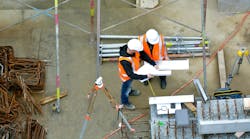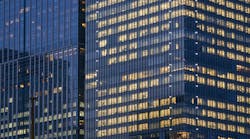The BICSI Winter 2009 meeting, held at the Rosen Shingle Creek Conference Center in Orlando from January 19 to 22, drew more than 4,800 attendees, including more than 1,600 registered information transport systems (ITS) professionals. Visiting the conference in search of products and business strategies that would offer them the best return on investment in an era of shrinking IT budgets, conference-goers got a lot in return.
Embracing the movement of going green, attendees learned about a number of green IT initiatives, many of which related to the power used by data centers — a market that has doubled over the past five years. According to “Green Computing: Using IT Automation to Achieve Energy Efficiency,” a recent white paper released by consulting firm Enterprise Management Associates, headquartered in Boulder, Colo., data centers consumed 1.5% of the electricity used in the United States in 2006 — a whopping 61 billion kilowatt-hours. Industry professionals predict that by 2010 the cost to power and cool data center equipment may exceed the cost of the hardware itself.
With these facts in mind, Congress directed the EPA in December 2006 to report on the power usage and growth of data centers and enterprise servers. That study brought about specific initiatives. For example, the EPA is collaborating with The Green Grid and its members to develop an Energy Star data center infrastructure rating. This rating would give data center operators a way to identify the greatest opportunity for savings, such as better cable placement, optimum thermal management, and energy-saving AC power distribution design.
BICSI, an organization that is accredited to develop ANSI standards, is working on a data center standard that can complement and reference other applicable data center standards and guidelines. For example, TIA-942, published in April 2005, covers a number of subjects, such as pathways and spaces, cable run distances, and general information on electrical, mechanical, and architectural design. It also recommends a parallel cold-aisle/hot-aisle rack and cabinet layout to keep the temperature within a data center consistent and airflow steady.
Spanning over 400 pages, the new ANSI/BICSI-002 Data Canter Design Standard and Recommended Practices is intended to cover every aspect of data center design, going well beyond the subject of structured cabling, referencing items such as ASHRAE standards and requirements of the Americans with Disabilities Act. The next version of the 002 standard will include information on energy-efficient design and material useful for achieving LEED certification.
Pre-conference highlights. Carol Everett Oliver of Berk-Tek, New Holland, Pa., George Wojtan of Network Video Technologies, Menlo Park, Calif., and Adrian Parvulescu of JVC Professional Products, Wayne, N.J., gave a presentation on "Convergence to CCTV: The Path to IP." With CCTV systems evolving from analog-based systems to a hybrid design, and then finally to an IP-addressable system, the user should understand how to achieve this transition. The presenters discussed how to select UTP and fiber media for a standards-based structured cabling network, and reviewed the connectivity equipment, media conversion products, camera types, and compression/bandwidth criteria required for a successful project.
Green sessions. The Tuesday afternoon general session concentrated on the growing field of green design and construction and how professionals in the information technology systems industry can benefit from this development.
In "Green Certification: RoHS/WEEE & REACH Objectives," Stanley H. Salot Jr. of Electronic Component Certification Board (ECCB) in Midland, Texas, reviewed the efforts of government agencies that are developing regulatory programs to eliminate toxic materials from electronic equipment and cabling components. Clients are demanding hazardous substance free (HSF) products and regulators worldwide are creating HSF technical requirements and regulations. Significant penalties may be imposed on firms for failure to comply in the future. This situation will require suppliers to obtain international third-party IECQ certification.
In "U.S. Green Building Council and LEED for Green Buildings," Brendan Owens, U.S. Green Building Council, Washington, D.C., described how the Leadership in Energy and Environmental Design (LEED) program was developed, how it works, and what to look for in the new LEED 2009 document. Owens also described how USGBC and BICSI are working together to have IT-related products and service recognized in the LEED program.
Salot and Owens were then joined on stage by Brian Hansen of Leviton Telecom, Dave Labuskes of RTKL Associates, Betty Bezos of Bezos Technologies, and Ed Mikoski of the Telecommunications Industry Association. As representatives of the newly formed Green Building Technology Alliance, the group led a "Panel Discussion on LEED" by answering questions from the audience about BICSI’s efforts to develop technology infrastructure-related innovation credits within the LEED rating system.
In "Cabling Infrastructure for Green Buildings," Paulo Marin, Paulo Marin Consultoria, Sao Paulo, Brazil, highlighted how information transport systems may be able to contribute to the optimization of physical resources and the overall reduction of power consumption in a building. BICSI and other industry organizations look for the LEED rating system to include a number of strategies from the IT industry that can help the environment and reduce energy use. The possible strategies include: smaller diameter cables, pre-terminated cables, physical layer management (having an accurate record of the installed cabling can minimize the need to abandon some cabling and add more cabling), cable sharing (that is, having a number of applications, such as control/monitoring systems, running on the same cabling), higher bandwidth/higher performance cabling, and wireless use. At present, the USGBC uses The Construction Specification Institute’s (CSI) Master Format Division 2 through 10, and the hope is that the rating system will be expanded to include Division 27, telecommunications cabling.
Wireless sessions. In "Wireless Security and Surveillance – Challenge or Opportunity?" Mike Intag, Firetide, Los Gatos, Calif., used examples of projects to show how wireless technology can be used for applications that previously were cost prohibitive or impractical. He followed this up by explaining how to reduce the time required for the permitting process and for completing the installation. He also spoke about the ways to deliver temporary and remote security/surveillance monitoring for special events/construction projects — or until a permanent system can be installed.
In "The Ins and Outs of Wireless: Preparing the Next Generation Wireless Facility," Lou Martinage, Mobile-Access, Vienna, Va., made the case that today’s wireless services are important business assets in a building and an important revenue stream for a facility manager. He reviewed the growing number of wireless services demanded by tenants to achieve increased productivity and operational efficiency, stating that all wireless applications have an ROI potential, but that full wireless coverage in a building is essential. He added that, while today’s wireless connectivity needs are challenging enough, the emerging services, such as Mobile WiMAX, are even more demanding.
Power over Ethernet session. In "IEEE 803.3at PoE Plus Operating Efficiency," Valerie Maguire, The Siemon Co., Watertown, Conn., discussed the developments in the pending IEEE PoE Plus standard, which defines electrical power distribution on structured cabling. With its capability to deliver up to 12.95W to a powered device (PD) at 48VDC over Cat. 3/Class C and higher rated structured cabling, the original IEEE 802 802.3af PoE (known as "Type 1") standard has wide application. Equipment supported includes: IP- based voice and video transmission, IP-based network security cameras, wireless access points, bar code scanners, and print servers. Additionally, PoE may be a driving force for customers to move from analog to IP-based surveillance systems.
However, back in 2005, the IEEE saw the need to deliver even more power in support of security cameras with pan/tilt zoom capabilities, biometric sensors, and other devices that have even higher power requirements. To respond to this need, the 802.at task force drew up specifications for the PoE Plus, or "Type 2" system that can provide up to 29.5W to the PD at 53VDC over Cat. 5 and higher rated structured cabling.
IEEE also received the help of the TIA and ISO cabling standards development bodies to characterize the current carrying capacity of various types of twisted-pair cables. Additionally, IEEE had to define a maximum DC cable current that would not cause a temperature rise above 10°C.
For the first time, managing heat buildup in structured cabling has to be addressed in new and retrofit project. The main challenges are: (1) ensuring that operating temperatures do not exceed 50°C, and making sure that that transmission performance is maintained with the heat buildup; and (2) specifying cable types and installation methods (such as bundling) that will minimize temperature rise.




